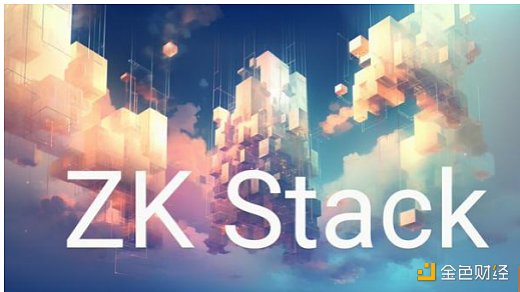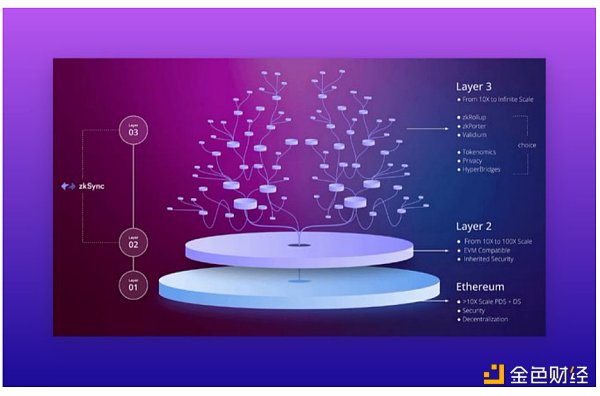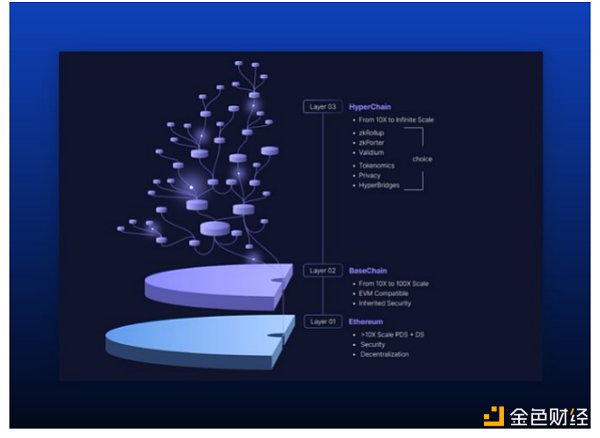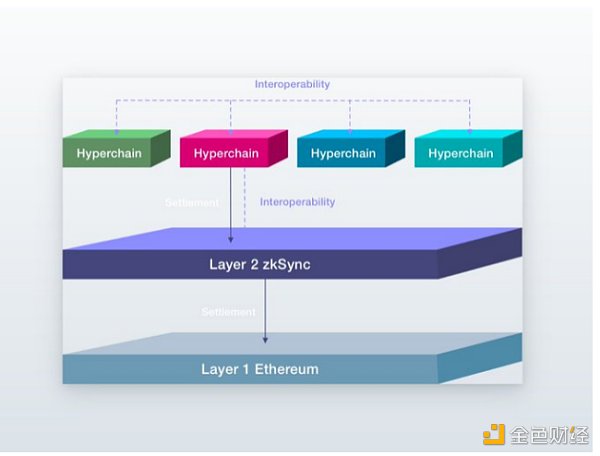Understanding the five core principles and unique features of ZKStack
Understanding ZKStack's core principles and features.Author: zer0kn0wledge.era, ChaoDAO; Translator: Blocking0xxz
With the announcement of ZKStack, a super-scalable and composable L2&L3 meta-chain framework based on the zkSync Era codebase, we are entering a new era of Ethereum expansion.

ZKStack is a modular, future-facing sovereignty framework for building zero-knowledge (ZK) driven chains. It is built on five core principles: open source, modularity and composability, flexibility, battle-tested security, and future-facingness.
(1) Open source
- Comprehensive Interpretation of the StarkNet Ecosystem: Which Projects are Worth Paying Attention to
- Proto-Danksharding may become the biggest narrative of the year, which projects will benefit?
- 5 noteworthy zkSync ecosystem projects inventory
ZKStack, developed under the MIT/ABlockingche open source license, is free to use. Free usage promotes community involvement, encouraging developers to actively contribute and modify the framework to suit their unique needs.
(2) Modularity and Composability
The key attribute of ZKStack is its modularity and composability. It aims to create super chains, a new type of ZK-driven chain that can seamlessly integrate into a trustless network, share liquidity, and have extremely low latency.
(3) Flexibility
One of the standout features of ZKStack is its flexibility. Developers can customize every aspect of the super chain, from choosing the sorter, to defining data availability patterns, to creating unique token economics, and so on.
(4) Battle-Tested Security
Leveraging the battle-tested security of zkSync Era (the most widely adopted ZK rollup on Ethereum), ZKStack boasts unparalleled reliability. zkSync Era’s impressive TVL and transaction volume attest to community confidence.
(5) Future-Facingness
As Ethereum continues to grapple with scalability challenges, ZK rollups offer a promising solution. Through technical integration, ZKStack is future-proofed, ready to enable developers to fully leverage ZK’s superpowers.
Building ZK-driven L2 and L3 (meta-chains) with ZKStack is becoming quite easy. The Layer 3 (L3) is a rollup built on top of the rollup L2, settling (verifying proofs) on L2 using zkSync’s PLONK proof with recursive properties (ability to prove other proofs).

This creates a recursive structure where the compression advantages of L2 proof are combined with the compression advantages of L3 proof to become even more powerful. This amplifies the cost advantages while maintaining L1 security.
The hyperchain built with ZKStack can rely on zkSync Era for settlement and data availability (DA), while Ethereum L1 serves as the final consensus and security layer (aggregated proofs from L2 settle on Ethereum L1). ZKStack achieves a perfect fusion of sovereignty and seamless connection. Developers have full control over the code and unrestricted autonomy to tailor every aspect of their hyperchain.
As mentioned above, the hyperchain built with ZKStack operates independently and only draws vitality and security from Ethereum L1. In addition, the hyperchain network promotes inter-chain connectivity, ensuring fast, low-cost interoperability and creating a seamless interoperable network.

Moreover, the entry and exit process between L1 and L2 is very expensive. The situation is different between L2 and L3, where the interoperability cost between L2 and L3 is lower and simpler. Also, since the independent L3 will interoperate through the economical L2 instead of the expensive L1, the interoperability costs between L3 are also very low.

Overcoming the fragmentation of liquidity across networks, zkSync Era leads this super-scalable unified liquidity network to become a pioneer in hyperchains, setting a benchmark for others to follow. Although ZKStack is powerful, it is not a universal solution. For traditional DeFi dApps or NFT projects, deploying on existing hyperchains (such as zkSync Era) may be more efficient and provide synchronous composability with other protocols.
However, developers may prefer to build their own hyperchains on ZKStack in the following two cases:
– When developers need to tailor their own chains.
– When developers are accustomed to asynchronously connecting with a wider ecosystem.
But why build on top of ZKStack? ZK technology unlocks hyper-abilities that existing non-ZK solutions cannot achieve. Utilizing these hyper-abilities requires courage to innovate and explore unknown paths, but it can achieve novel use cases and provide excellent user experience/performance.
Here are some unique features:
– Native Account Abstraction (AA) ensures excellent user experience.
– The simplicity of ZK Proofs allows certain types of transactions (such as oracle updates) to be cost-effective by a factor of 1000.
– zkPorter accounts bring ultra-low costs.
What will be the development of the L3 expansion narrative over the next few months? Let’s wait and see if zkSync can lead the trend again by launching zkStack and its vision for a prosperous super-chain ecosystem.
We will continue to update Blocking; if you have any questions or suggestions, please contact us!
Was this article helpful?
93 out of 132 found this helpful
Related articles
- Long Push: In-depth Analysis of Pendle, the LSD Genius Project that Grew 10x in Six Months
- Analysis of Asymetrix: An LSD-based Asymmetric Profit Distribution Protocol
- Circle’s 15 potential projects to watch in 2023
- Perform data analysis and comparison for the (3,3) section projects, bribery efficiency ranks as follows: Thena > Velo > Chronos > Pearl.
- New Project Preview | LSDFi: Lucid Finance to Assist Emerging LST Protocol in Gaining Liquidity
- Exploring the Ethereum Layer2 network Fraxchain
- New Project Preview | Artichoke Provides a Unidirectional Liquidity Layer DeFi Protocol






